Affiliate links on Android Authority may earn us a commission. Learn more.
Best of Android 2018: the best audio
November 18, 2018

We’ve subjected the best Android devices of 2018 to a slew of testing and can confidently inform you of what the best sounding phone is, as well as list other standout products with excellent audio. While we’ve only highlighted one phone, a handful of options produce perceptually perfect audio when it comes to noise and dynamic range. Aside from the models that are virtually indistinguishable from each other, we’ll also address a few other phones that perform well but not perfectly.
What makes something the best sounding phone?
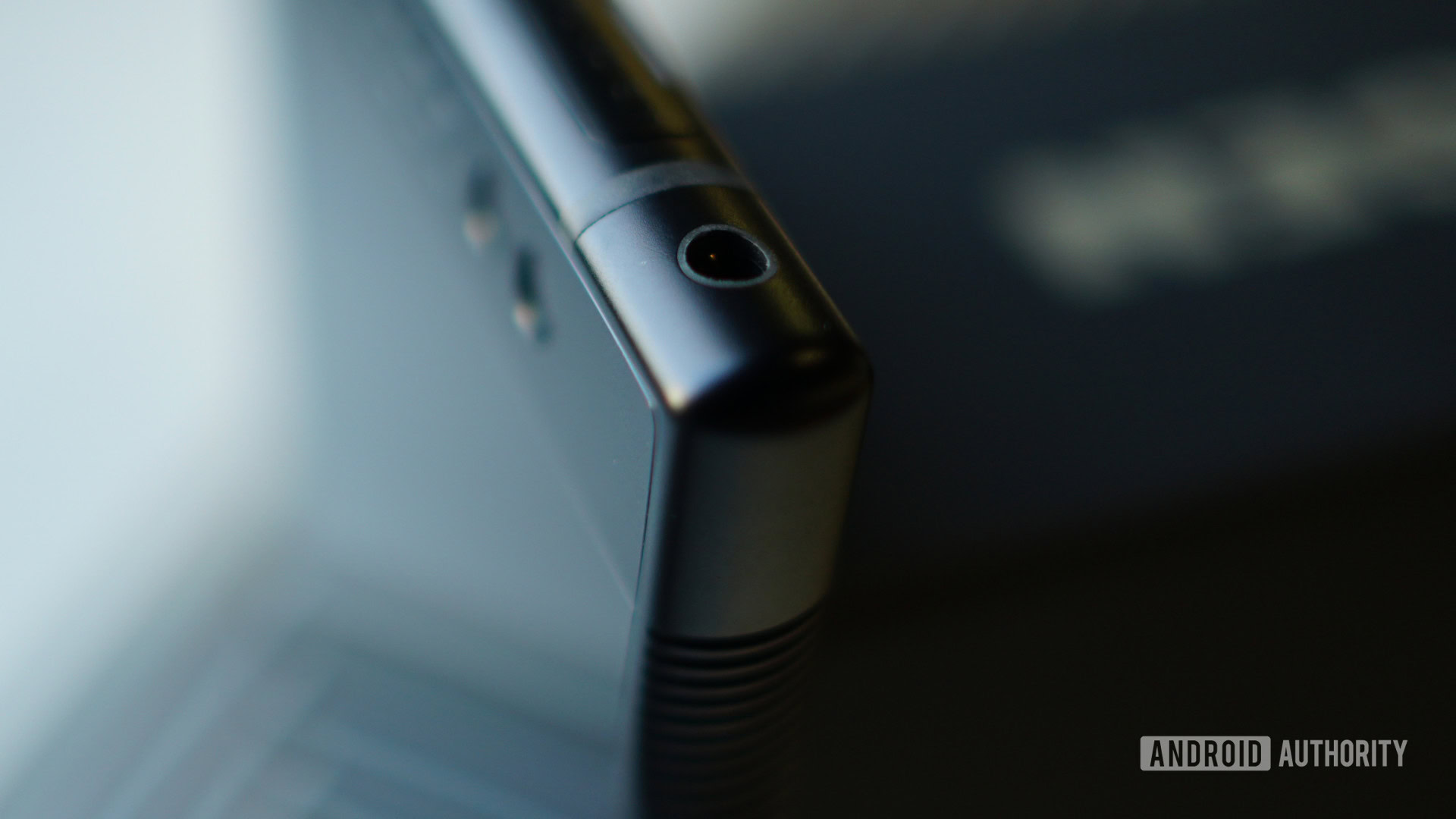
As writers from our sister site SoundGuys will tell you, audio is both a subjective and objective experience. While the subjective, experiential part is valid, we’re here to highlight some of the more scientific bits to get you on your way.
When looking for a phone that produces excellent sound quality, there are a few things to keep an eye out for:
- Noise levels should be under -96.6dB for CD-quality music.
- Dynamic range should similarly be at or over 96.6dB.
- Frequency response shouldn’t ever deviate from 0dB in either direction, but you won’t hear it if it’s less than 0.5dB.
- Smartphone speakers suck.
- Headphone jacks are the only way to ensure high-quality audio.
Only three phones tested exhibited audible errors
If you were to take a look at our huge, color-coded results spreadsheet, you’d notice right away how most smartphones in 2018 exhibit no audible flaws. When it comes to figuring out which smartphone is better than others for audio quality, only two things separate them: features (like a headphone jack), and Bluetooth.
We don’t like shaming phones around here, but these are the offending models:
- RED Hydrogen One
- HUAWEI P20
- HUAWEI P20 Pro
SoundGuys noted some irregularities with the HUAWEI phones when it came to AAC, but also noted every Android phone has errors with that finicky codec. The phones listed here can handle SBC, LDAC, aptX, and aptX HD on-spec. Additionally, the errors exhibited by those phones are unlikely to be heard by over 70 percent of the population, so be sure to temper outrage on that front.
However, the RED Hydrogen phone has frequency response errors of over 7dB, meaning you’ll absolutely hear it affect your music. It’s the lone “bad” phone for audio here.
The tests tell a very rosy story
We were surprised to find that noise wasn’t really a factor in differentiating phones, as most phones did a great job with it, however, there were a few shortcomings in other areas that thinned the herd considerably.
[reviews height=”325″ width=”500″ step=”” min=”0″ max=”0.1″ tension=”” type=”bar” characteristics_colors=”#dd3333″ characteristic=”audio.focusrite-readings.total-harmonic-distortion” showAll=”” desc=”Lower is Better” title=”Total Harmonic Distortion” x_legend=”Percent” y_legend=”” ][review id=”925181″pattern=”#dd3333″][/review][review id=”924727″pattern=”#00eb95″][/review][review id=”924503″pattern=”#00eb95″][/review][review id=”924491″pattern=”#00eb95″][/review][review id=”924480″pattern=”#00eb95″][/review][review id=”924151″pattern=”#00eb95″][/review][review id=”904042″pattern=”#00eb95″][/review][review id=”904027″pattern=”#00eb95″][/review][review id=”903433″pattern=”#00eb95″][/review][review id=”903177″pattern=”#00eb95″][/review] [/reviews]
While it’s important for smartphone audio to minimize noise, high dynamic range is just as crucial. Although we’re accustomed to seeing the acronym “HDR” in photography, auditory dynamic range is the ratio of the quietest sound to the loudest sound a device can produce.
[reviews height=”325″ width=”500″ step=”” min=”0″ max=”” tension=”” type=”bar” characteristics_colors=”#dd3333″ characteristic=”audio.dynamic-range” showAll=”” desc=”Higher is better” title=”Dynamic Range” x_legend=”(dB)” y_legend=”” ][review id=”925181″pattern=”#dd3333″][/review][review id=”924727″pattern=”#00eb95″][/review][review id=”924503″pattern=”#00eb95″][/review][review id=”924491″pattern=”#00eb95″][/review][review id=”924480″pattern=”#00eb95″][/review][review id=”924151″pattern=”#00eb95″][/review][review id=”904042″pattern=”#00eb95″][/review][review id=”904027″pattern=”#00eb95″][/review][review id=”903433″pattern=”#00eb95″][/review][review id=”903177″pattern=”#00eb95″][/review] [/reviews]
Speaker loudness might mostly serve to annoy the crap out of everyone around you, but sometimes you need a little boom in your mobile to catch a call or watch a YouTube video with a group. This purely tested how loud a given smartphone’s speaker can get and didn’t take into account distortion. We see quite a bit of difference between our top contenders, with the Nokia 7.1 and LG V40 ThinQ leading the pack.
[reviews height=”325″ width=”500″ step=”” min=”0″ max=”” tension=”” type=”bar” characteristics_colors=”#dd3333″ characteristic=”audio.loudspeaker-loudness” showAll=”” desc=”Higher is better” title=”Speaker Loudness” x_legend=”(dB)” y_legend=”” ][review id=”925181″pattern=”#dd3333″][/review][review id=”924727″pattern=”#00eb95″][/review][review id=”924503″pattern=”#00eb95″][/review][review id=”924491″pattern=”#00eb95″][/review][review id=”924480″pattern=”#00eb95″][/review][review id=”924151″pattern=”#00eb95″][/review][review id=”904042″pattern=”#00eb95″][/review][review id=”904027″pattern=”#00eb95″][/review][review id=”903433″pattern=”#00eb95″][/review][review id=”903177″pattern=”#00eb95″][/review] [/reviews]
A fourth metric brings us back to the fundamentals of audio: frequency response. Although consumer headphones and earbuds tend to alter sound with a brand’s specific “house signature,” if you’re looking for accuracy, you want a device’s frequency response to be as neutral as possible. Though much hay is made over the high-end DAC assemblies of the LG V40 and Samsung phones, the truth is most handsets can decode and output a decent enough signal for even picky listeners. Only five phones crossed our +/- 0.5dB barrier, three of which are listed above.
This is particularly pertinent, as it applies to the best sounding phone. By producing a neutral frequency response, a smartphone minimizes harmonic distortion at the source. Any issues with the DAC’s ability to reproduce an accurate, high-fidelity response may be amplified down the line when you plug your headphones in.
An accurate, neutral-leaning frequency response is imperative for any phone to be considered as the best sounding phone.
Most phones deviate less than 0.5dB in either direction, and score nearly perfect in this regard. Any of the phones listed today are essentially indistinguishable from one another performance-wise, making each smartphone an excellent choice when considering audio quality. While we can easily get lost nitpicking smartphone audio performance, the fact of the matter is smartphones handle audio exceptionally well. Generally speaking, you’re not going to be able to tell the difference between the top 10 smartphones for audio.
However, that brings us to a funny artifact of our scoring: only phones with a headphone jack could top our list. Dongles are a death sentence for our awards.
The current state of smartphone audio
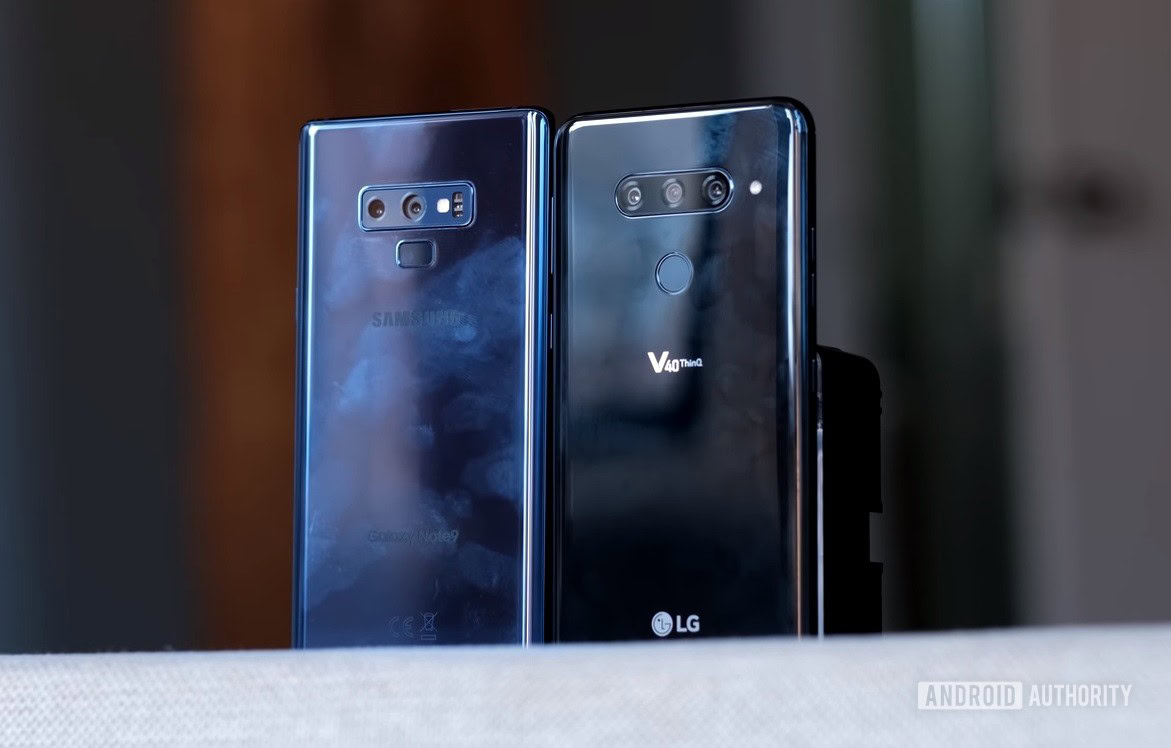
Listen to the SoundGuys podcast: The state of smartphone audio
Yes, 10 phones is a lot of models to be indistinguishable — it serves as a testament to how far smartphone audio quality has come. Now, what makes each phone a top contender is its ability to exceed the limits of human hearing.
Human hearing ranges from 20Hz-20kHz — hence why you see that range brandished all over headphone packaging — but this range assumes a young age and unsullied ear mechanics. Most of our hearing abilities degrade naturally by the time we hit our early- to- mid-twenties, which you can put to the test here. If you find that you can’t hear a few of those files, try applying a filter in your phone’s settings (found in Samsung, LG phones). You might be surprised at the improvements you can get.
What’s more, if you’re streaming over Bluetooth, even the highest quality codec can’t keep step with wired listening. In fact, LDAC 330kbps showed itself less reliable than SBC, the lowest-common-denominator of codecs. So, the assumed codec pecking order been skewed up until now. AAC diminishes audio quality a bit when streamed over an Android device, and aptX is what listeners should be sticking to. Even then, however, wired remains king of quality.
The LG V40 ThinQ has the best sound quality of any handset in 2018
After subjecting each of the 30 contenders to a battery of tests and analyzing the data through our in-house scoring algorithms, the LG V40 ThinQ narrowly reigned victor over the ASUS ROG Phone and Samsung Galaxy phones. These phones actually beat out the V40 in some cases, but because many of those measurements lie outside the realm of human perception, they didn’t give those phones an edge with our scoring methods. The LG V40 ThinQ’s headphone jack, Quad DAC, and internal amplifier is a winning combination that’s yet to be bested.
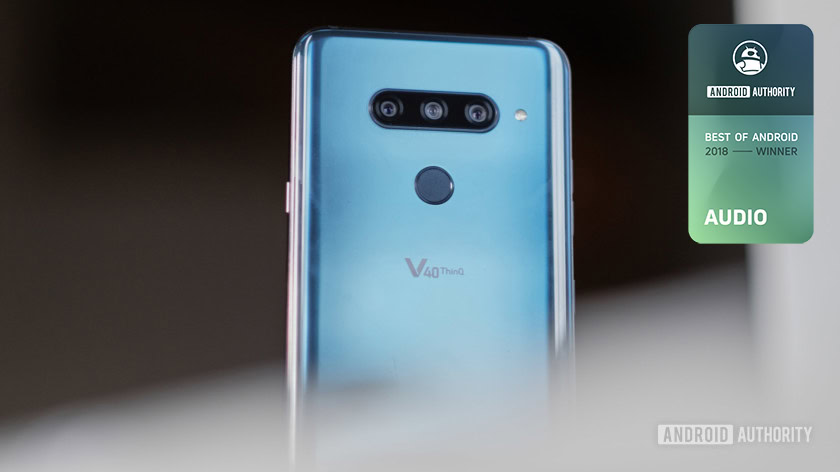
It’s that internal amplifier that makes the LG V40 ThinQ a special phone. Where LG’s V-series has had it for a long time now, no other phones offer a 2V output, which means you can use power-hungry high-end headphones without breaking a sweat. Though it’s probably not the most practical idea to listen to a pair of planar magnetic headphones on the town, the fact is the LG V40 ThinQ is the only phone that’s going to let you do that. The Quad-DAC certainly sounds flashy, but the power behind the headphone jack is what makes the LG V40 ThinQthe best phone for audio.
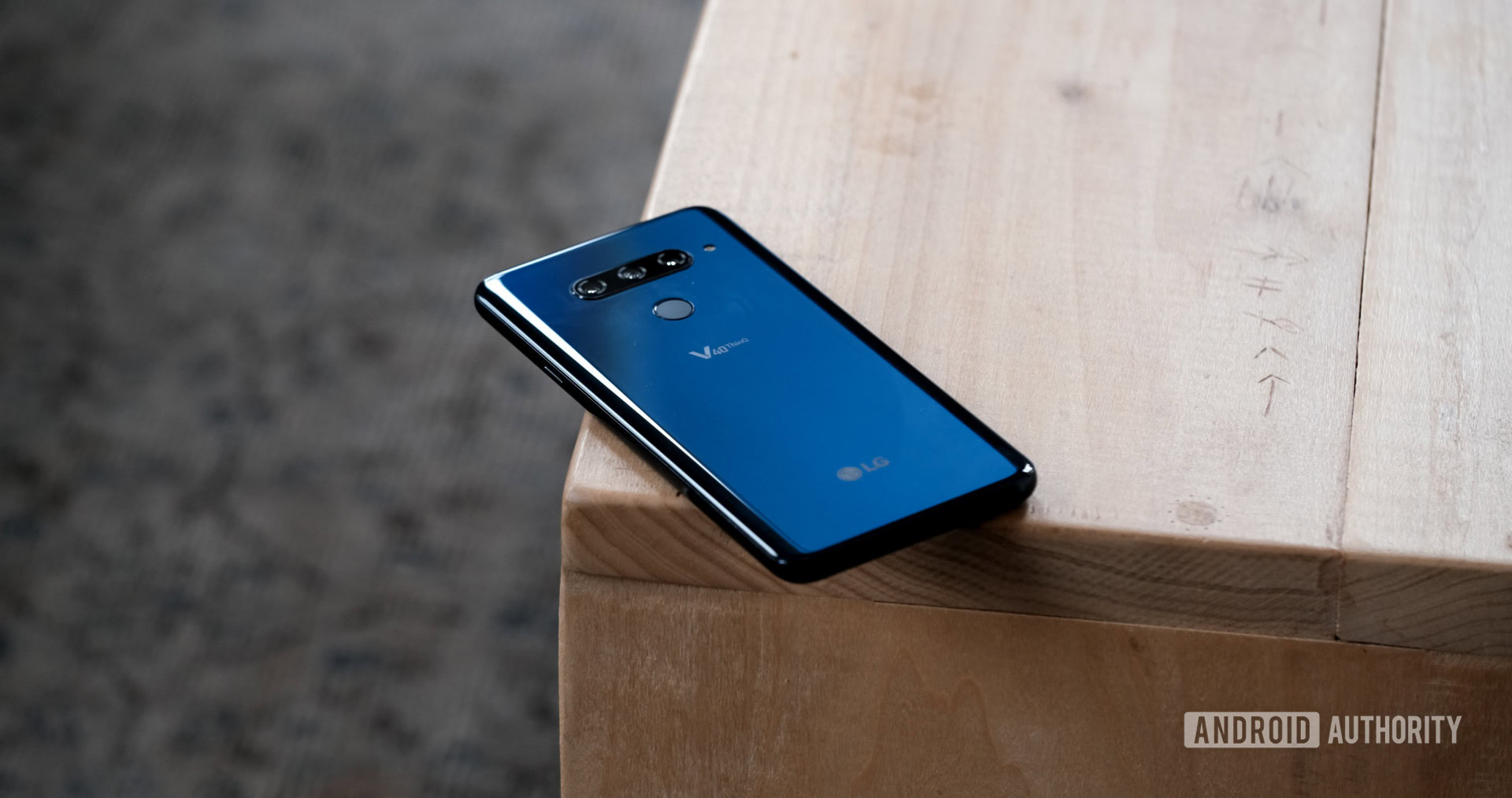
Although it’s important to acknowledge the winner’s weaknesses, we tip our headphones to the LG V40. It — along with the ASUS ROG Phone, vivo NEX, and Samsung Galaxy Note 9 — outperforms its smartphone brethren in dynamic range. Additionally, the V40 frequency response deviates just 0.07dB, outperforming all other potential picks.
Although the V40 can't outperform its competition in every metric, the top-notch power output makes it the best sounding smartphone of the year.
This year, there’s a wide selection of excellent phones out there for listeners who prioritize audio quality. All of the listed candidates are within a few meager points of one another and remain perceptually indistinguishable — unless you have a set of high-impedance headphones that require a lot of juice.
- LG V40 ThinQ
- ASUS ROG Phone
- Nokia 7.1
- Samsung Galaxy S9 Plus
- LG G7 ThinQ
- Samsung Galaxy S9
- vivo X21
- vivo Nex
- Xiaomi POCOphone
- Samsung Galaxy Note 9
One more thing about testing
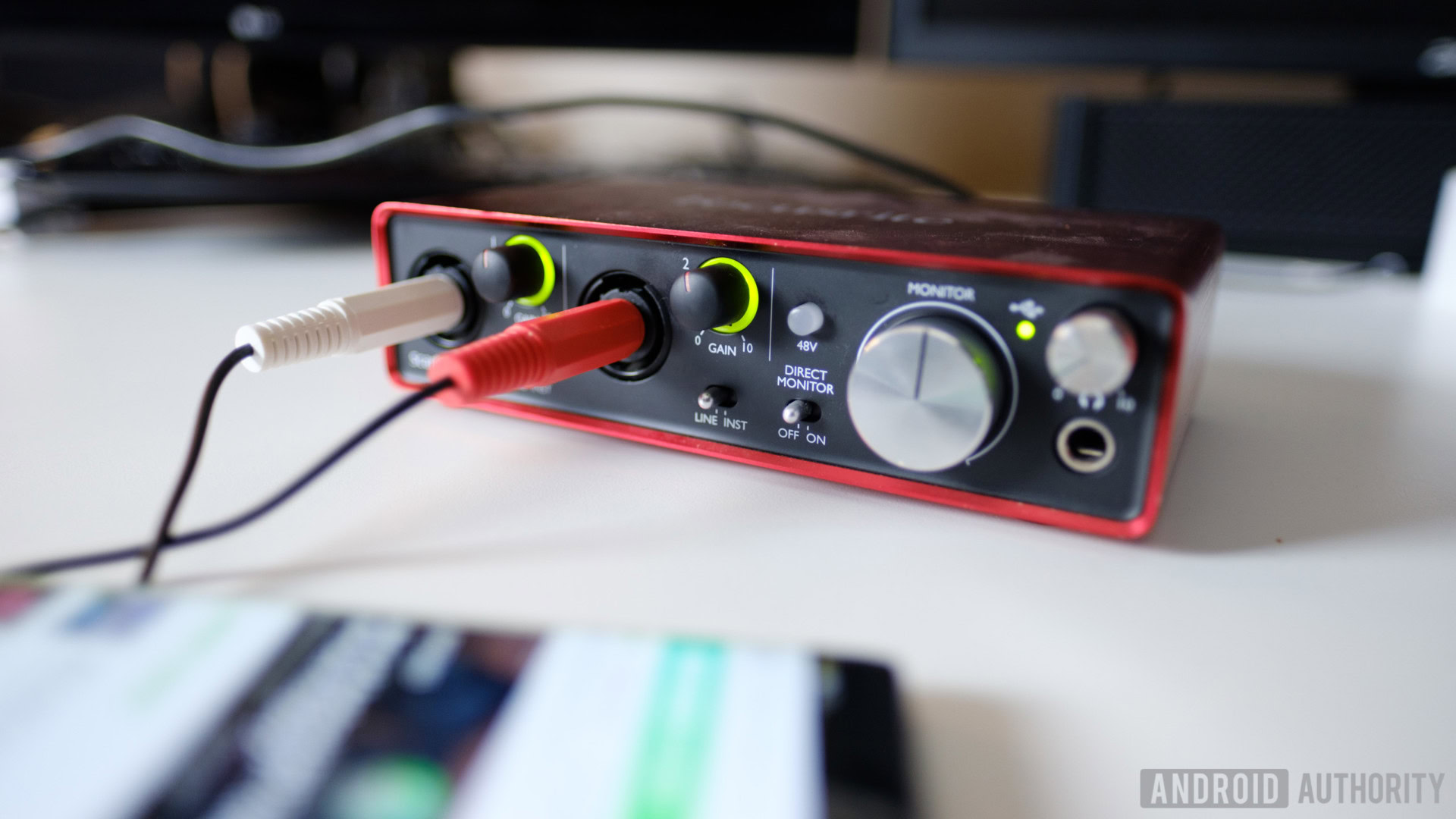
Any of the nine alternatives are very close to the LG V40. We understand if you want a more financially viable choice, or a battery that’s not going to quit after a few hours. In that case, the Xiaomi POCOphone, and Samsung’s Galaxy S9 and S9 Plus remains standout performers. Though they’re technically not the best sounding phones, they’re sure to satisfy any enthusiast’s ears. We’ll have future comparisons coming down the line to help inform you on future smartphone-related decisions.
Although we’re not yet publishing our internal scoring, we implore our readers to learn about how we conducted our testing, and the philosophy behind it. We want to ensure our data tells a story and informs our audience of relevant information. What’s more, we want our data to be accessible to a wide array of readers, be it the computer engineer or the average consumer.
Come back throughout the week for more Best of Android 2018 coverage as we have plenty more to share with you: